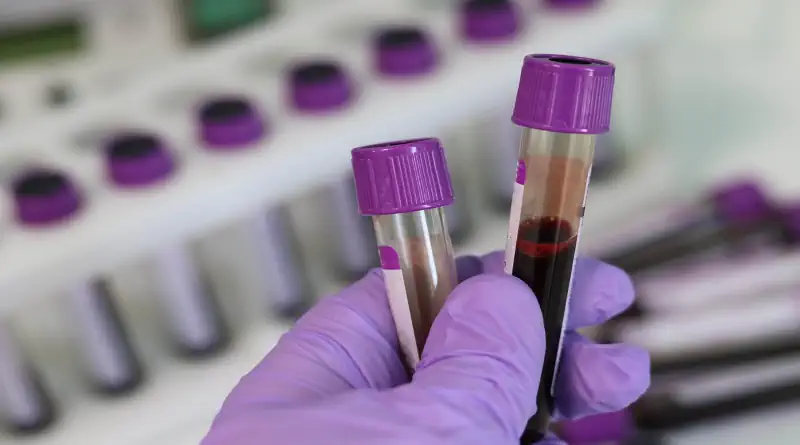Thrombophilia Testing
When someone suffers a blood clot, we need to treat them, but we also need to identify the cause. Specifically, knowing the cause can determine prognosis and help us decide how long to anticoagulate for. In general, the causes for blood clots should follow the rules set by Virchow in the mid-1800’s (Wirchow’s triad). Fast forward to the 21st century; in modern care we are able to test for several hypercoagulable mutations. For instance factor V Leiden and the prothrombin gene mutation. There is evidence that these mutations are tied to a higher risk for venous thromboembolism compared to the general population. But does this mean that thrombophilia testing is useful?
Prevalence of Hypercoagulable Mutations
Many of these genetic variants are not uncommon in the general population. In fact, the prevalence of the Factor V Leiden mutation can be higher than 5% in Caucasians. Usually, thrombophilia testing targets the most common abnormalities. But remember that there are other causes for clots that we can detect. Sometimes we will need to test specifically for those. Still, here is a table showing some of the factors we usually test for:
| Condition | Prevalence | Comments |
| Factor V Leiden | 2-7%. Less common in African-American. | Specifically increases VTE risk with oral contraceptive use. Activated Protein C resistance is more prevalent than the actual FVL mutation. |
| Prothrombin Gene Mutation | 1-2% | 3-fold increase in baseline risk for VTE |
| Protein C deficiency | 0.2-0.5% (less severe) / 0.00013-0.0002% (more severe) | Autosomal dominant. Note there are also acquired variants (e.g., liver disease, sepsis). There are two types of deficiency: reduced level, and functional. The type depends on the exact mutation in the PROC gene. |
| Protein S deficiency | Mild cases occur in 0.2% of people. But severe cases are likely rare. | Similar to protein C deficiency, there are various acquired variants. Also, both an absolute and a functional deficiency are possible. All come from mutations in the PROS1 gene. |
| Antithrombin III deficiency | 0.02-1% | The deficiency is usually measured from the activity. So the activity level dictates the prevalence. It is considered uncommon. |
Is Thrombophilia Testing Useful?
The short answer is no. The longer answer is “usually no”. There are just other factors that matter more. First, if the event was provoked, everyone will agree that there is no need to test. Testing can only add confusion. But even after unprovoked events, testing rarely changes management. So, practically, there are only few instances when testing can be a bit useful.
In essence, remember that many of these conditions are not rare. Despite this fact, most people who carry hypercoagulable mutations will not experience a clot. In other words, a hypercoagulable mutation confers a high relative risk for thrombosis, but the absolute risk is still low
Why Perform Thrombophilia Testing?
After a venous thrombotic event (DVT or PE), we usually order thrombophilia testing for one of two reasons. The first, is to know if someone is at risk for developing a clot. And the second is to decide about duration of treatment with anticoagulation.
Let’s look at both. If someone has a first-degree relative that had a clot, or if they have a personal history of clotting, we already know they are at increased risk. So adding more tests will not change our knowledge. Practically, there are only very specific instances where it matters. For instance, to make decisions about oral contraceptives, hormone replacement or pregnancy. Another area where knowing about a mutation can sometimes be useful is to assess the risk of surgery and blood clots.
Next, is treatment duration. When trying to figure out anticoagulation duration, there are usually other factors that we need to consider more than whether there is a hypercoagulable mutations. The most important factor is the circumstances of the clot. For instance, blood clots after surgery or trauma have low recurrence rates. On the other hand cancer associated thrombosis has a very high recurrence rate. Because we know this, thrombophilia testing is usually not useful for decision making. Indeed, the British Society for Hematology published that thrombophilia testing is rarely indicated. The American Society of Hematology also recommended against routine testing. They acknowledged the decision was at the least complex.
Thrombophilia Testing is Useful in Borderline Scenarios
In venous thrombosis, thrombophilia testing can be useful in borderline scenarios. What do I mean? If a clot is obviously provoked, thrombophilia testing is not useful. This is because we know what to do. We only need to anticoagulate for a limited duration. Similarly, if a clot is clearly unprovoked, or in the setting of cancer, we also know what to do. We need long-term anticoagulation, as long as it is safe to do so.
But there are situations, where the risk is not so clear. And in some of these situations, a known thrombophilia might tip the scale in favor of long-term anticoagulation. In May 2023 the American Society of Hematology published guidelines on this topic. As there are very little hard data to rely on, most of the recommendations were mainly based on expert opinion. While I do not agree with some of their conclusions, they did suggest to test in borderline scenarios.
Here is an example scenario: A patient had a stroke after a long flight. They are found to have a DVT and a PFO. As we presume the cause for the stroke was a paradoxical embolism, we close the PFO. But now we have to decide whether this patient needs to remain on anticoagulation. On the one hand, they had a blood clot after flying. On the other hand, flying is not a very strong risk factor for clots. Millions of people fly every year, and never have a clot. So what do we do? Well, in theory, knowing about a significant thrombophilia might direct us toward long-term anticoagulation.
And what about this situation: A patient with iliac vein compression (May-Thurner) has a DVT. She receives anticoagulation and then the May-Thurner is stented. Can we stop anticoagulation? Was the May-Thurner the sole contributor to her clot? We often debate this question in conferences. Can thrombophilia testing help us here? Perhaps…
Thrombophilia Testing in Arterial Thrombosis?
As an aside, most hypercoagulable mutations affect venous thromboembolism risk. So testing when a patient has an arterial event is rarely indicated. If you do choose to pursue testing, you should focus on tests that are relevant to arterial clots. Practically, there are not many conditions that are associated with arterial clots:
- Cancer
- Antiphospholipid antibody syndrome
- Heparin induced thrombocytopenia and thrombosis
- Paroxysmal Nocturnal Hemoglobinuria
- Thromboangiitis Obliterans (Buerger’s)
People tend to think about other factors when it comes to arterial thrombosis. For instance hyperhomocysteinemia. But these are more relevant to accelerated atherosclerosis. Understanding these conditions is complicated. For instance, treatments to reduce homocysteine levels did not consistently reduce stroke or myocardial infarction risk.
Special Situations
There are special situations when we order thrombophilia testing. These are separate than venous thrombosis. One example is Warfarin skin necrosis. When that happens we suspect protein S or protein C deficiency. Another example is neonatal purpura fulminans. Knowing about the cause can have practical implications (e.g., avoiding Warfarin).
Whether to test for specific mutations in families with a clotting tendency is not straightforward. Similarly, people sometimes send testing if someone had a clot in an unusual location (e.g., mesenteric vein) or recurrent clots. While testing can offer insight to the cause of clotting, it is not clear if knowing the cause will change any clinical decisions, except for specific situations.
You Decided to Test. Practical Considerations:
We can usually perform testing for genetic mutations (e.g., prothrombin gene mutation). But this is not true for factor levels and function. There are many conditions that can affect the levels and function of clotting factors. For instance, medication (Warfarin or DOAC), hormones (e.g., pregnancy) and an acute clot.
Beyond Thrombophilia Testing
After all this, we need to remember that thrombophilia testing is just a layer in our search for the cause of a blood clot. Indeed, sometimes, the cause is obvious. For instance, recent surgery or acute illness. Also, we can usually identify some common contributing factors. For example, obesity or older age. Some common anatomical problems might contribute as well. For instance, a popliteal vein aneurysm The association between varicose veins and thrombosis seems to be as strong as most inherited clotting disorders. Of course, we worry about cancer and blood clots. Despite all these, more often than not we cannot identify the specific cause for the clots at the time of presentation and we are left to make treatment decisions with some uncertainty.





Pingback: Chronic Mesenteric Ischemia: Symptoms, Diagnosis and Treatment
Pingback: Blood Clots After Flight: How to Prevent? When can I fly?